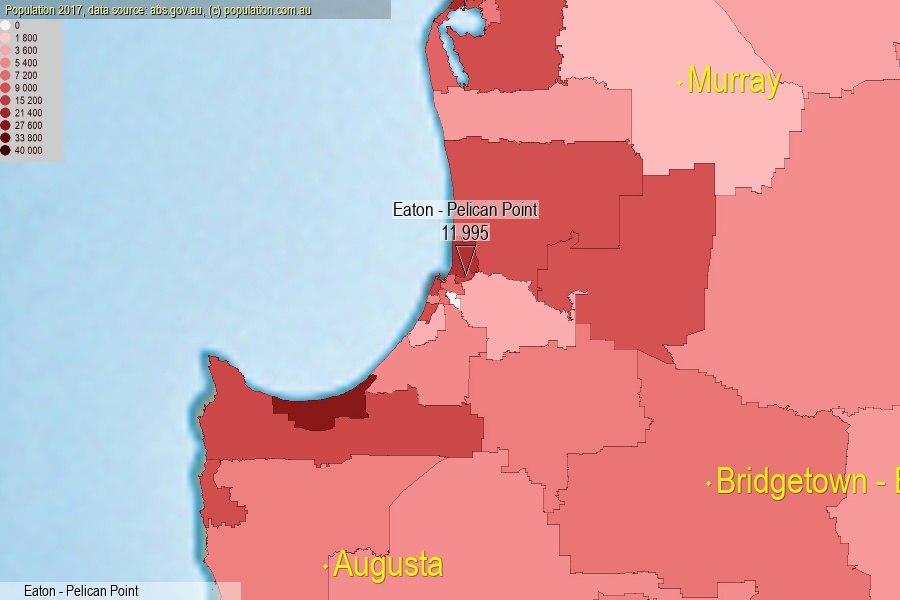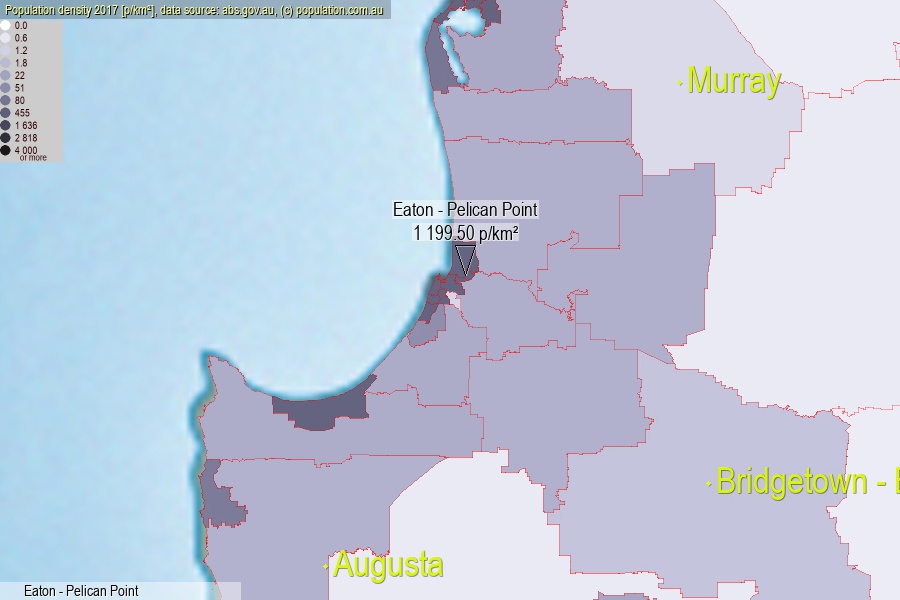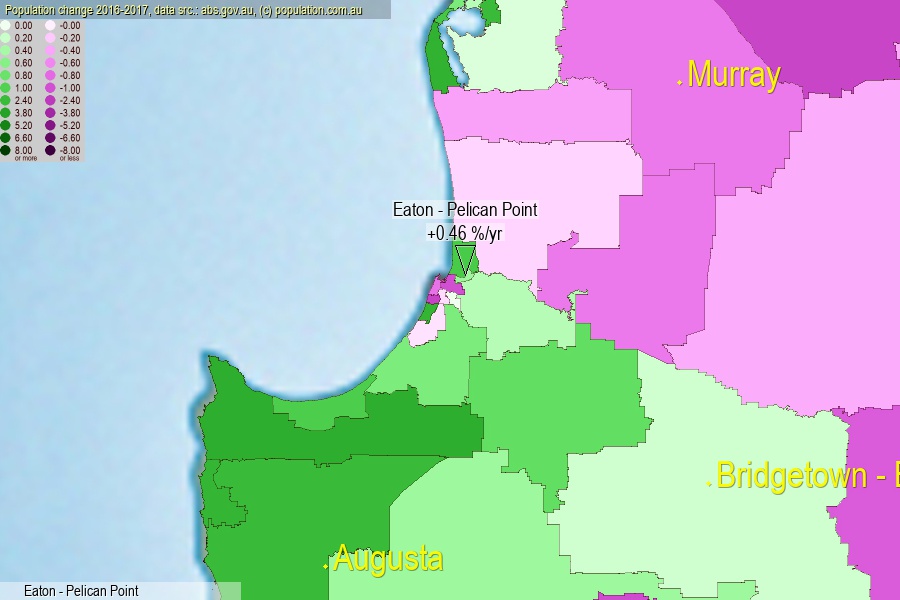 population.com.au
population.com.auLast official estimated population of Eaton - Pelican Point (as Statistical Area Level 2) was 11 995 people (on 2017-06-30)[2]. This was 0.05% of total Australian population and 0.463% of WA population. Area of Eaton - Pelican Point is 10.00 km², in this year population density was 1 199.50 p/km² . If population growth rate would be same as in period 2016-2017 (+0.46%/yr), Eaton - Pelican Point population in 2025 would be 12 444. [0]



Click to enlarge. Eaton - Pelican Point is located in the center of the images.
Population [people], population density [p./km²] and population change [%/year] [2]
View borders » (new window) [4]
[1991-1992] +4.12 %/Yr.
[1992-1993] +4.17 %/Yr.
[1993-1994] +6.06 %/Yr.
[1994-1995] +4.16 %/Yr.
[1995-1996] +4.43 %/Yr.
[1996-1997] +6.24 %/Yr.
[1997-1998] +11.87 %/Yr.
[1998-1999] +11.02 %/Yr.
[1999-2000] +8.96 %/Yr.
[2000-2001] +8.19 %/Yr.
[2001-2002] +2.84 %/Yr.
[2002-2003] +2.12 %/Yr.
[2003-2004] +4.65 %/Yr.
[2004-2005] +6.16 %/Yr.
[2005-2006] +7.75 %/Yr.
[2006-2007] +2.20 %/Yr.
[2007-2008] +5.22 %/Yr.
[2008-2009] +4.74 %/Yr.
[2009-2010] +3.25 %/Yr.
[2010-2011] +2.58 %/Yr.
[2011-2012] +4.23 %/Yr.
[2012-2013] +3.14 %/Yr.
[2013-2014] +2.09 %/Yr.
[2014-2015] +1.73 %/Yr.
[2015-2016] +0.72 %/Yr.
[2016-2017] +0.46 %/Yr.
[0] Calculated with linear interpolation from officially estimated population
[1] Read more about SA2 and Australian Statistical Geography Standard (ASGS) on abs.gov.au
[2] Population data from Australian Bureau of Statistics (Population and density: 2017; change: 2016-2017)
[3] Digital Boundaries: Australian Statistical Geography Standard (ASGS) 2016.
[4] Border coordinates are simplifyed using Ramer-Douglas-Peucker algorithm.